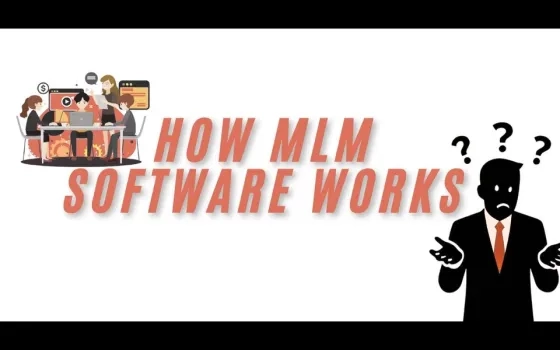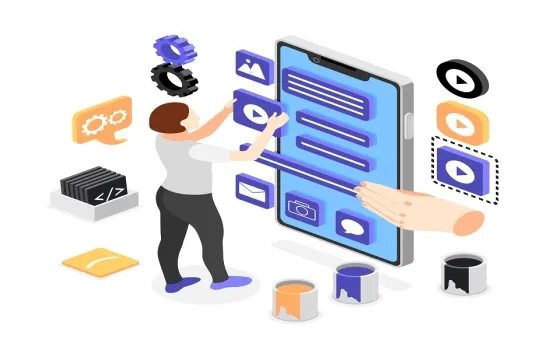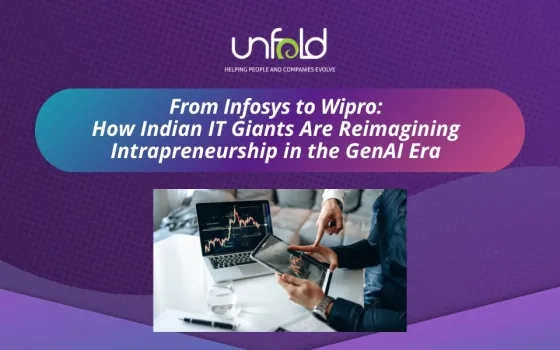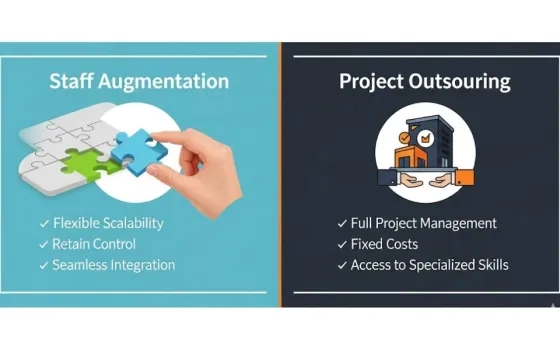When Kiran Karnik took over as NASSCOM President in 2001, there were only 15 employees in the organization. A few would recollect that Devang Mehta’s untimely demise had left a huge void and cast doubts about the association’s future. An iconic legacy was transferred almost overnight onto the very able Mr Karnik, who had spent several decades at ISRO & Discovery Channel earlier, and brought in a wholly different perspective from that of an industry insider.
Besides his stellar career, he is also a prolific writer, and his NASSCOM journey is very well documented in the book, The Coalition of Competitors: The Story of NASSCOM and the IT Industry. His other book, Crooked Minds – a rather unusual name – spotlights on the Indian innovation journey which he has posited – doesn’t follow a linear path.
The other day, he took some time off to visit the NASSCOM campus in Noida to share his insights on the future of technology. “A home-coming it is, but of a very different kind”, he mused. After all, both NASSCOM and the IT industry had changed many times over since he was at the helm.
Crooked Minds – How do they work?
Traffic rules in India are easily flouted which is not such a good thing to have but it also tells us about a certain mindset which isn’t inhibited to think out of the box to create pathways which are non-existent. Arguably, a case for supreme efficiency leads us to a 10 – 15 % boost, at best; whereas, an altogether innovative approach may even look at 100% gains.
“Crooked Minds” – and, not to be confused with its other derogatory usage – can challenge conventional thinking. For instance, in schools, things are rigid and regimental. Students are encouraged to solve on their own which subsequently leads to individual achievements overshadowing team efforts. For innovation to foster in later years, we need conditions which are exactly the opposite. Over time, systematic rigidity gets built in and future generations are tasked with removing some of these obstacles with the aid of technology.
Disrupting Legacy in Traditional Industries
Mr Karnik’s latest book, evolution – Decoding India’s Tech Journey, builds on such ideas. He gave the example of banking which has changed beyond recognition from what it was, say 20 years ago. Back then, for a simple transaction like cash withdrawal, a “self” drawn cheque had to be presented at a specific bank branch, between the avowed banking hours of 10 AM – 2 PM. It led to a colossal waste of time and great inconvenience. Today, most people haven’t visited their bank branches in the last few months. Nonetheless, banking activities go on 24/7/365, aided by technology.
Education, as we know of it, may disappear in our lifetime as online courses take over. The kind of interactions we have seen in classrooms for well over a century is now happening in a digital environment without students having to physically attend classes. There is a strong likelihood that this will become the new normal, and in our lifetime too. A single chip can store an enormous amount of information thus rendering portability to knowledge dissemination.
Ethical Dilemma
Let’s look at healthcare. Implants such as contact lenses, hearing aids and pacemakers work beautifully inside the body to give a better quality of life. Outside of the body, there are other medical devices which work to save lives – heart-lung & dialysis machines etc. are some such examples. With time, these devices have been getting smaller, more sophisticated and infinitely more efficient. Today, Stem Cell research is in a very advanced stage and soon, it may well be possible to replace any body part clinically. But, consider this: it is one thing to have limbs replaced or even the liver but what if it’s the brain? Will it still be the same individual? Scientific pursuits such as these are pushing us inexorably into the realms of an ethical dilemma.
Technology has created problems too – huge ones actually for which we may not have the answers right now. For instance, an impending nuclear war looms large today. The environment continues to deteriorate due to overzealous industrial activity. Millions of years ago, dinosaurs became extinct when the earth was struck by a giant asteroid. Often scientists are faced with the question – will humans meet a similar fate? “Not if we can avoid it”, says Mr Karnik. We have two options ahead of us. Migrating to another habitat (planet) is a possibility. Astronauts are known to spend months or even years on end at international space stations so this idea may not be such a stretch after all. The other is about migrating pollution causing industries to poorer countries which isn’t a very ethical thing to do. Though it has been done before, the reprieve is only for the short term at best.
On soft spots for humans when intelligent machines take over.
Humans can excel in many areas, particularly the softer aspects like creativity. Let’s face it, intelligent machines are better equipped to perform certain tasks and will eventually replace humans in these areas. For instance, driverless cars are programmed in a manner to react much faster than humans, and hence better suited to take instantaneous corrective action.
We live in an age where really smart people are the ones making money – look at all the innovators. As mentioned earlier, technology can be used to replace certain body parts to enhance performance where humans can eventually become super-humans. Realistically and in the short-medium run, only the very wealthy will have access to this kind of technology to gain an unfair advantage over the under-privileged class. Will it cause a very different kind of social inequity?
Can India create real innovation? Most of what we see are business model innovations.
This is a debate which has been on for several decades and was ripe even at the time when outsourced tech workers were unfairly branded as cyber-coolies. The discussion is still alive but in a different shape and form.
Once a platform is provided, we are very good at building services, atop. Probably why OTT services have such massive traction here. But the question remains, can we create a platform of global magnitude someday? Breakthroughs require money – are we prepared to make such kind of investments? Having said that, it’s not always about big money and sometimes it can just be a great idea which someone is willing to back financially. Typically, many great innovations in the West have come out of this mindset. Once we become a nation of innovators the next step will be about striding towards invention – at a much higher degree. In the older generation, there were many great managers but insufficient leaders. Today perhaps, we have many leaders but an inadequate number of innovators.
India spends 0.65% of its GDP on R&D whereas, China is at 2%. The Chinese economy is about five times that of India. In absolute terms, that should tell us something.
Can tech lead to evil consequences, as few have prophesized?
It has both pros and cons and we have to be responsible enough about how we use technology. But, as a race, we will definitely find a way.
Regulation – how much is too much or too little?
If regulation kicks in too early, innovation will suffer. Too late, and consumers may be taken for a ride. It’s a difficult question to answer because the trust gap is not narrowing at all. All the big guys today are being pulled up for some kind of a breach or other.
What does it truly mean to be in a borderless world? Dominant forces are at play and it can be worrisome. This is particularly true if the corporate sector gets to be all-powerful someday. We have to re-imagine new structures where common people have a say in policy making.
Is it too early in India to address issues on AI related to ethics, bias and the likes? What can NASSCOM do to contribute in these areas?
When it comes to ethical choices in technology, the answers aren’t easy to find as these areas continue to evolve. However, there’s a large section of society which is blissfully unaware that these issues even exist. It’s for bodies like NASSCOM to bring these issues to the forefront and create platforms where they can be suitably addressed. It’s in our interest that this happens, otherwise, we will always see a knee-jerk reaction to tech adoption and policymaking.
Is India seen as a policy laggard in technology?
In the West, tech adoption happened earlier so they have gone through the cycle already, and are in a better position to lay down standards which we often follow. If we are to be seen as not mere followers then we have to adopt tech with great speed. Only then will it be clear to us the exact nature of regulation that we require. For instance, our standards may well be different from the west. But if we wait far too long, then we are compelled to comply with Western standards without having experienced the full cycle. It’s very important that we are a part of these “global clubs” of early tech adopters to wield adequate clout and have a say.
Cybersecurity is an area where regulations are still being developed. In this, India can take lead right now and drive it globally.
Why aren’t we great innovators? Do we need a complete overhaul of our education system?
Certainly, it needs an overhaul but given our size, it may not be a very practical approach to attempt all of it in one go. Instead, can we have smaller pilot projects with no more than 10 – 15 institutions? Similar experiments are being attempted in private universities and companies as well.
Before we attempt to change the entire system we need to arrive at a conclusion that it can be done in a pilot run, otherwise, the repercussions can lead to crippling consequences. Indians by and large have done phenomenally well in other countries where the ecosystem has been far more conducive. It’s time we invested substantially towards developing the ecosystem.
Acquire or build in-house?
Very large IT services companies are process driven. It’s in their DNA which churns out repeatable outcomes in an assembly-line model. Innovation is exactly the opposite where one does not seek repeatable outcomes. That’s why it makes sense to invest in “Islands of Excellence” but to keep them at an arm’s length, else there’s a high risk of the services DNA influencing the latter.
The New Opportunities
In the earlier decades, the domestic IT market in India wasn’t large enough so the focus was always on exports. That has changed considerably. Today, there’s a significant domestic market opportunity in areas such as healthcare, education, agriculture among others. Earlier, “doing well” translated into making money whereas today there’s also a whole new segment of “doing good”. Perspectives have changed and the solutions that work in India are now being taken to other geographies as well.
Do we have it in us to take big bets?
The Indian IT industry is dominated by the middle class which is naturally risk-averse. Traditionally, this class has always sought a safety net. Having said that, the young people in India have a far greater risk appetite than the earlier generations. Moreover, we have to do away with the age-old practice of branding individuals as failures. We can take a leaf from the Valley where its ideas that fail and not individuals.
On Aadhar
Think of the millions of Indians who did not have an identity earlier. Today they do. Undoubtedly, it’s a blessing of sorts but there are instances when things may have gone too far – infringement of privacy for example. There’s always a possibility that in 1 % of the cases there will be misuse but for that why must the other 99% of the population suffer?
Government’s Support
Most certainly, the government has been supportive of the IT industry in the past and continues to be so even today. In turn, a very high degree of trust has also developed. While as NASSCOM, we must continue to build on this trust but we must not be seen as a spokesperson of the government. If we do that, we run the risk of losing credibility. When we differ we have to be sure that our position is backed by data and sound economic principles.



















